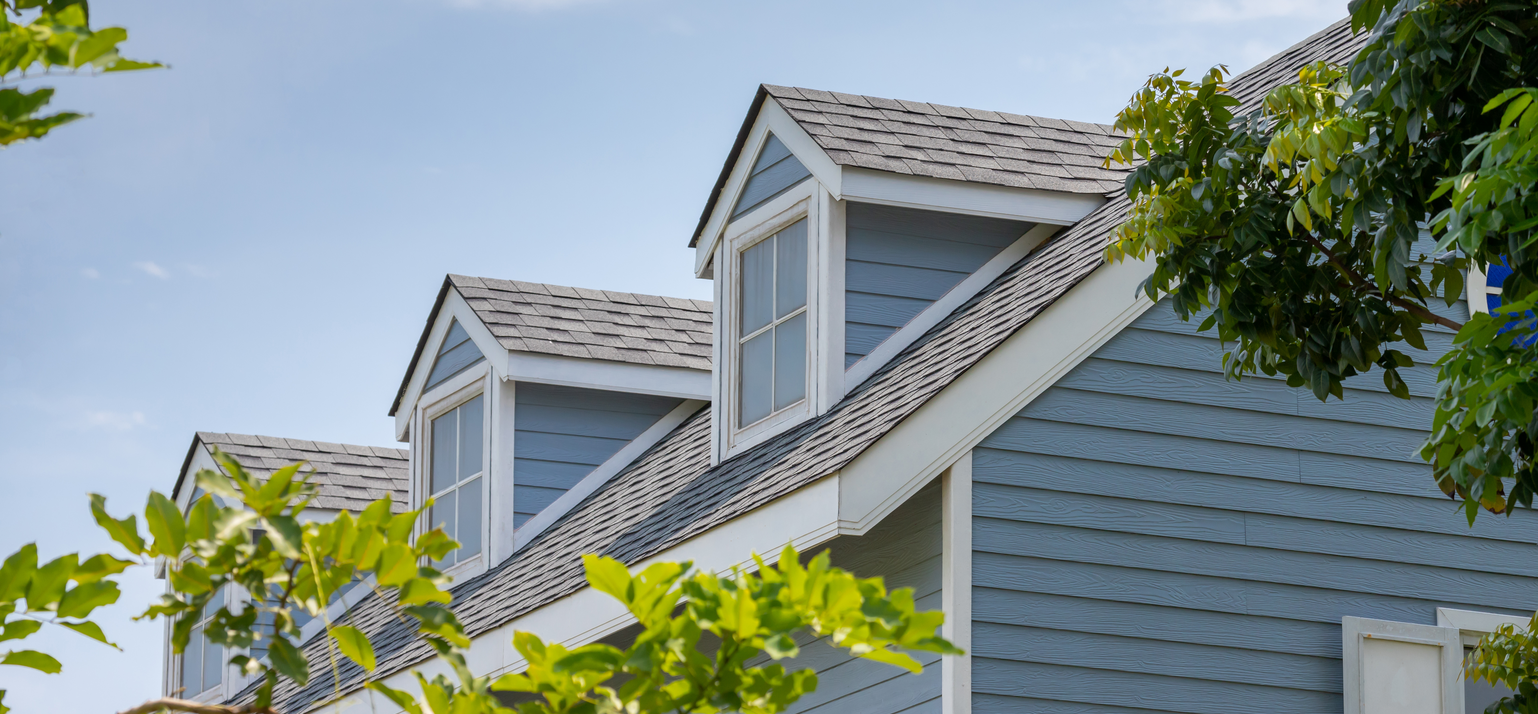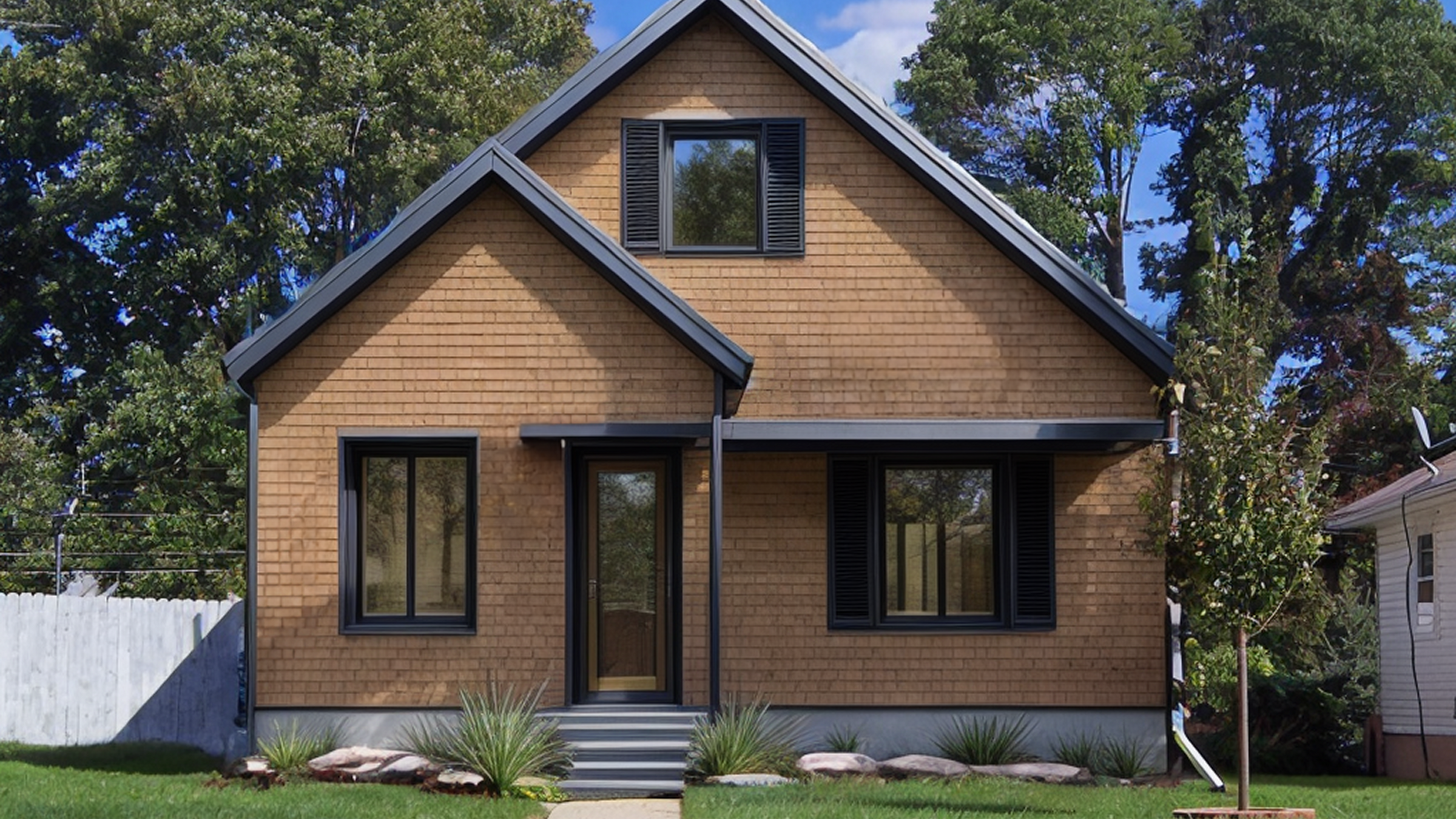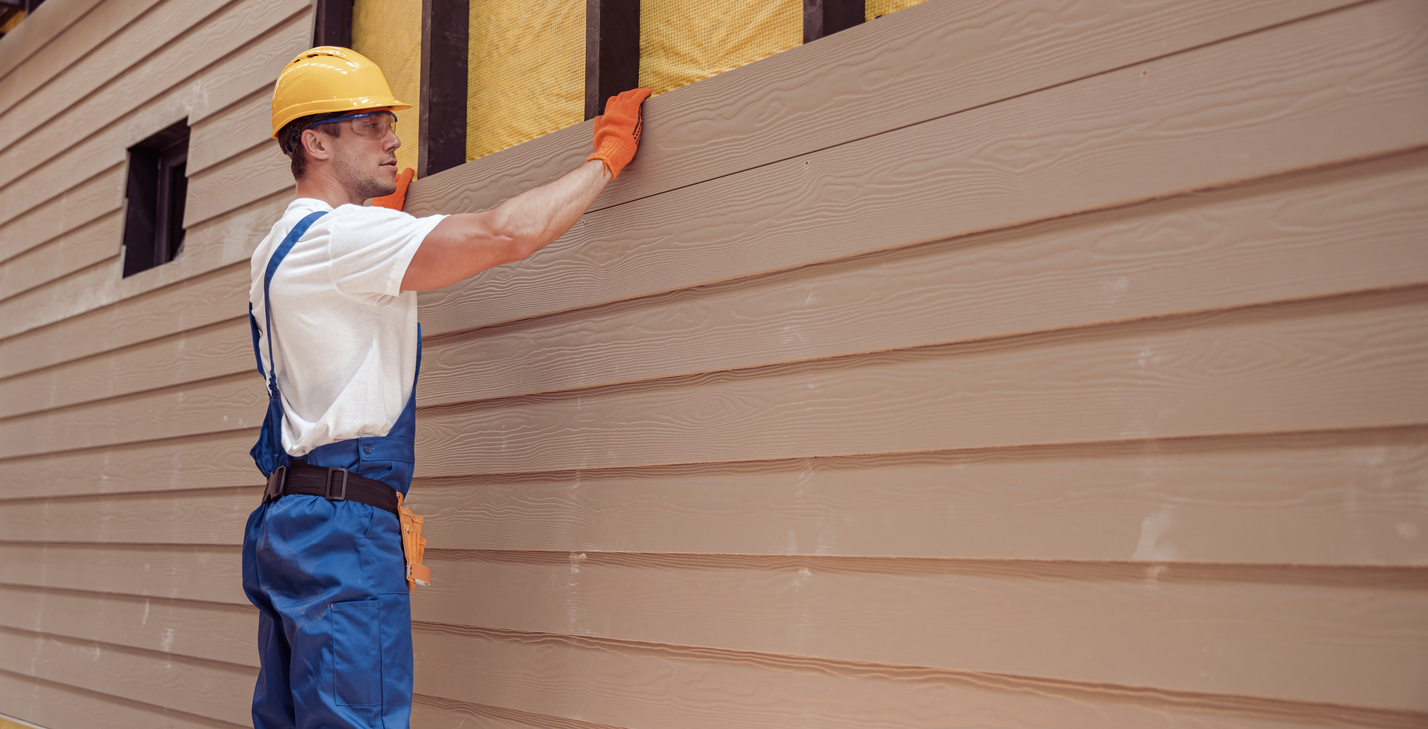Replacing a roof is one of the most significant maintenance tasks for a homeowner, entailing considerable expense.
The cost can vary based on factors like the roof's size and complexity, chosen materials, and regional differences. With Hover, discover the ins and outs of replacing a roof and the associated costs.
The average cost to replace a roof
On average, homeowners can expect to pay between $5,000 and $13,000 for a roof replacement. However, this cost can increase significantly for larger homes or homes with complex roof designs. Additionally, the type of roofing material chosen will also impact the total cost.
For example, asphalt shingles, which are the most common roofing material, tend to be more affordable compared to other options such as metal or slate. The size of your roof will also affect the cost, as larger roofs will require more materials and labor.
When considering the cost of replacing a roof, it's important to factor in additional expenses that may arise during the project. These can include the removal of the old roof, any necessary repairs to the roof deck, and the installation of proper ventilation systems. These additional tasks can add to the overall cost but are essential for ensuring the longevity and functionality of your new roof.
Furthermore, the location of your home can also play a role in the cost of a roof replacement. Factors such as local building codes, permit fees, and accessibility to the roof can impact the final price. It's crucial to consult with local roofing professionals to get an accurate estimate that considers all these variables and ensures a successful roof replacement project.
Factors that affect the cost of your roof replacement
When considering a roof replacement, it's important to understand the various factors that can influence the overall cost. Generally, you can expect around 60% of a roofing estimate to account for the roofing labor cost per square foot, while the other 40% accounts for the roofing materials needed for the job. Beyond just labor, materials, and the size and complexity of your roof, there are several other key elements to take into account.
First, one often overlooked factor is the condition of the existing roof structure. If there is extensive damage or underlying issues that need to be addressed before the new roof can be installed, this can add to the total cost of the project. It's crucial to have a thorough inspection done to assess the structural integrity of your roof.
Another significant factor to consider is the geographic location of your home. Different regions have varying weather patterns and building codes that can impact the materials and installation methods required for a roof replacement. For example, homes in areas prone to severe weather may need more durable roofing materials, which can drive up costs.
Furthermore, the quality of the roofing materials you choose can have a lasting impact on the longevity and performance of your new roof. While upfront costs may be higher for premium materials like metal or slate, they often offer better durability and energy efficiency, potentially saving you money in the long run.
It's also worth noting that the skill and experience of the roofing contractor you hire can influence the overall cost. A reputable contractor with a track record of quality work may charge higher rates, but their expertise can ensure a successful and long-lasting roof replacement.
Considering these additional factors alongside the size, complexity, and accessibility of your roof can help you make informed decisions when planning for a roof replacement project.
Roofing material costs and lifespan
When considering a roof replacement, it's essential to understand the costs and lifespan of different roofing materials. Here is a breakdown of some common options:
- Asphalt shingles: This is the most popular and affordable option, with an average lifespan of 20-30 years.
- Metal roofing: While more expensive initially, metal roofs can last up to 50 years or more.
- Tile: Common in warmer climates, tile and terracotta roofs can last up to 50 years.
- Slate: A natural stone material that is exceptionally durable, with a lifespan of 75-100 years. However, it is also one of the most expensive options.
- Wood shake: Aesthetic and environmentally friendly, wood shake roofs have a lifespan of around 30 years.
|
Material |
Average Cost |
Lifespan |
|
Asphalt |
$2,500 |
15-30 years |
|
Wood |
$13,200 |
20-25 years |
|
Tile |
$20,000 |
45-50 years |
|
Metal |
$3,000-$25,000 |
50-75 years |
|
Slate |
$20,00-$30,000 |
75-100 years |
It's important to note that the lifespan of a roofing material can be influenced by various factors such as climate, maintenance, and installation quality. For example, in areas with extreme weather conditions like heavy snowfall or intense sunlight, certain materials may deteriorate faster than expected. Regular inspections and timely repairs can help extend the lifespan of your roof regardless of the material chosen.
Additionally, when selecting a roofing material, it's not just about the initial cost and lifespan. Consider other factors such as energy efficiency, eco-friendliness, and aesthetic appeal. Metal roofs, for instance, are known for their energy efficiency as they reflect solar heat, reducing cooling costs in hot climates. On the other hand, wood shake roofs provide a natural and rustic look that complements certain architectural styles.
How to reduce roof replacement costs
There are several ways you can potentially reduce the cost of your roof replacement:
- Get multiple quotes from reputable roofing contractors to compare prices.
- Consider using more affordable roofing materials without compromising quality.
- Perform regular inspections and maintenance to extend the lifespan of your roof.
- Take advantage of any available discounts or promotions offered by roofing companies.
- Consider financing options if the upfront cost is a concern.
When seeking quotes from roofing contractors, it's essential to ask about the specific materials they plan to use, the estimated timeline for the project, and any additional services included in the price. By comparing these details across multiple quotes, you can make an informed decision that not only saves you money but also ensures a high-quality roof replacement.
Choosing more affordable roofing materials doesn't mean sacrificing durability or aesthetics. Options like asphalt shingles, metal roofing, or composite materials can offer cost-effective solutions without compromising on performance. Additionally, some roofing manufacturers offer warranties on their products, providing added protection and peace of mind for homeowners.
Full vs. partial roof replacement costs
When facing the decision to replace your roof, understanding the distinctions between a full and partial replacement, and the costs associated with each, is crucial. This choice not only affects your immediate expenses but also the long-term value and integrity of your home.
Full Roof Replacement Cost
A full roof replacement involves stripping off the existing roofing materials down to the deck, and then installing a new underlayment and roofing material. This option is generally recommended when the roof is near the end of its lifespan, has widespread damage, or if you're looking to upgrade the material for better durability, energy efficiency, or aesthetic appeal.
Cost Factors:
- Material and Labor: The primary expenses are the new roofing materials and labor. Costs vary widely based on the material chosen (asphalt shingles, metal, slate, etc.) and regional labor rates.
- Size and Complexity: Larger roofs and those with complex designs (e.g., multiple gables or skylights) increase costs due to more materials and labor.
- Underlayment and Accessories: A full replacement allows for updating underlayment, flashings, and ventilation, essential for roof health.
- Disposal: Removing and disposing of the old roofing material can add to the cost, especially for heavier materials like tiles.
- The investment in a full replacement can range significantly, often from $5,000 to $25,000 or more, reflecting the above factors. Although it's a sizable upfront cost, a new roof can enhance your home's value, improve energy efficiency, and provide peace of mind with warranties that often cover 20 years or more.
Partial roof replacement cost
Partial roof replacement targets specific areas of the roof that are damaged or worn out. This option can be cost-effective, with most repairs averaging around $1,000, if the damage is localized, such as from a fallen tree limb or wind damage to a particular section.
Cost factors:
- Matching Materials: Finding matching materials for the existing roof can be challenging, especially for older roofs, potentially leading to higher costs or aesthetic discrepancies.
- Labor Intensity: Partial replacements may require more precise labor to integrate new sections with the old, ensuring a seamless appearance and watertight seal.
- Underlying Damage: The cost can escalate if there's unnoticed damage beneath the surface layer, such as rotted decking or compromised insulation.
- Partial replacements can cost anywhere from a few hundred to several thousand dollars, depending on the extent of the repair and the roofing material. While less expensive upfront, partial replacements may not address underlying issues affecting the rest of the roof, potentially leading to additional repairs in the future.
Should I repair or replace my roof?
The choice between a full and partial roof replacement depends on several factors, including the age and overall condition of the roof, budget constraints, and long-term homeownership plans. Here are some considerations:
- Age of Roof: If the roof is nearing the end of its expected lifespan, a full replacement might be more economical in the long run.
- Extent of Damage: Widespread or systemic issues favor a full replacement, while isolated damage might be suitable for partial repair.
- Future Plans: If you intend to sell the home soon, consult with a real estate professional about the value a new roof could add. For those planning to stay long-term, investing in a full replacement could offer better value and satisfaction.
Consulting with a reputable roofing professional is essential. They can assess the roof's condition, provide detailed cost estimates for both options and recommend the most cost-effective and durable solution for your specific situation. Their expertise can guide you through the decision-making process, ensuring that you invest wisely in your home's roofing needs, and balancing immediate costs with long-term benefits and protection.
What are signs that you need to repair or replace your roof?
Knowing when to repair or replace your roof is essential to prevent further damage and avoid potential safety hazards. Here are some signs that indicate it may be time to take action:
- Missing or damaged shingles
- Visible signs of water leakage or stains on your ceiling
- Moss or algae growth on your roof
- Sagging or drooping areas
- Cracked or curling shingles
- Excessive granule loss in your gutters
If you notice any of these signs, it's crucial to have a professional assessment to determine the best course of action.
Missing or damaged shingles can leave your roof vulnerable to water leaks and further damage. It's important to address this issue promptly to prevent any structural issues in your home. Water leakage or stains on your ceiling are clear indicators of roof damage that require immediate attention. Ignoring these signs can lead to mold growth and compromise the integrity of your roof.
Moss or algae growth on your roof not only affects the aesthetic appeal of your home but also indicates excess moisture retention, which can weaken the roof's structure over time. Sagging or drooping areas suggest potential structural damage and should be inspected by a professional roofer to assess the extent of the problem. Cracked or curling shingles are signs of aging and wear, signaling the need for repairs or a roof replacement to maintain the protection of your home.
How to find a great roofing contractor
Choosing a reputable roofing contractor is essential to ensure a successful, high-quality roof replacement. Here are some tips to help you find a great roofing contractor:
- Ask for recommendations from friends, family, and neighbors who have had positive experiences with roofers.
- Research online reviews and ratings for local roofing companies.
- Check the contractor's credentials, licenses, and insurance.
- Request multiple quotes and compare them thoroughly.
- Ask for references and contact previous customers to inquire about their experience.
- Make sure the contractor offers warranties for both labor and materials.
By following these steps, you can increase the chances of finding a reliable and skilled roofing contractor for your roof replacement project.
When considering a roofing contractor, it's also important to inquire about their experience with the specific type of roof you have. Different roofing materials and designs require different skills and expertise. A contractor who is well-versed in installing asphalt shingle roofs may not necessarily excel at working with metal roofing systems or flat roofs. Therefore, make sure to ask the contractor about their familiarity and experience with your particular roofing material.
Furthermore, before finalizing your decision, it's advisable to visit ongoing or recently completed projects by the roofing contractor. This will give you a firsthand look at the quality of their workmanship and attention to detail. Observing how they handle the installation process, interact with their team, and maintain a clean work environment can provide valuable insights into their professionalism and commitment to excellence.

-1.jpg)

